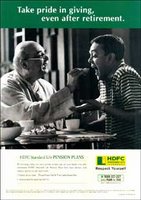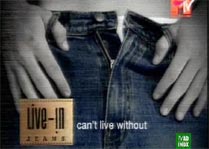Brand : Ceasefire
Company: Real Value Appliances
Agency: Grey
Brand Count : 114
Ceasefire was India's first domestic fire extinguisher. It was one of India's best and worst marketing stories. A brand that virtually created and ruled a category faded out after12 years.
Fire extinguishers comes in the category of unsought goods and it is difficul t and expensive to create and survive in such a product category . Real Value Appliances owned by Mr. Pheroze Engineer started operations in 1989 bringing to the country a new concept - a domestic fire extinguisher. The fire extinguishers were not uncommon to Indian consumers. We see it in large malls and theaters. But a domestic one was unique. Indian consumers never thought of having one in their homes.
t and expensive to create and survive in such a product category . Real Value Appliances owned by Mr. Pheroze Engineer started operations in 1989 bringing to the country a new concept - a domestic fire extinguisher. The fire extinguishers were not uncommon to Indian consumers. We see it in large malls and theaters. But a domestic one was unique. Indian consumers never thought of having one in their homes.
The product made perfect sense in Indian market ( infact every market). Our households deal with fire all the time and the risk of fire being getting out of control is very much there. Hence a marketing mind would easily see the prospect of cashing in that need : the need for protection from fire. Thus came in to market Ceasefire. The product was compact, unique had a catchy name, looked good and boasted of extinguishing all sorts of fires.
Ceasefire was halon 1211 based fire extinguisher that was very compact and was handy and easy to use ( with minimum effort). Much more than the efficacy of the use, it gave a certain peace of mind to the Indian consumer against the possible fire mishap.
Company: Real Value Appliances
Agency: Grey
Brand Count : 114
Ceasefire was India's first domestic fire extinguisher. It was one of India's best and worst marketing stories. A brand that virtually created and ruled a category faded out after12 years.
Fire extinguishers comes in the category of unsought goods and it is difficul
 t and expensive to create and survive in such a product category . Real Value Appliances owned by Mr. Pheroze Engineer started operations in 1989 bringing to the country a new concept - a domestic fire extinguisher. The fire extinguishers were not uncommon to Indian consumers. We see it in large malls and theaters. But a domestic one was unique. Indian consumers never thought of having one in their homes.
t and expensive to create and survive in such a product category . Real Value Appliances owned by Mr. Pheroze Engineer started operations in 1989 bringing to the country a new concept - a domestic fire extinguisher. The fire extinguishers were not uncommon to Indian consumers. We see it in large malls and theaters. But a domestic one was unique. Indian consumers never thought of having one in their homes.The product made perfect sense in Indian market ( infact every market). Our households deal with fire all the time and the risk of fire being getting out of control is very much there. Hence a marketing mind would easily see the prospect of cashing in that need : the need for protection from fire. Thus came in to market Ceasefire. The product was compact, unique had a catchy name, looked good and boasted of extinguishing all sorts of fires.
Ceasefire was halon 1211 based fire extinguisher that was very compact and was handy and easy to use ( with minimum effort). Much more than the efficacy of the use, it gave a certain peace of mind to the Indian consumer against the possible fire mishap.
The product was well received in the market. The ads were focusing on building in the consumer a fear about a possible fire mishap . The ads were backed by a sales campaign. The company focused on direct marketing for promoting the product . Since the " Fear of Fire" is so basic to human psyche, the success was imminent. The product was priced at a premium and the customers never complained.
Fire extinguishers , like Insurance is one kind of product where customers are not unhappy if it is not being used. Hence the success is in keeping the " Fear " alive in the customer's mind. The success of Ceasefire was much discussed in Management classes those days.
Then buoyed by the success, the company diversified to Vaccumizer and " rest became history". From a brand that was among the top ten fastest growing brand in the country to a company referred to BIFR, things moved very fast from 1997 onwards.
It happened not because the brand failed the company but it was because the company failed the brand. The unsuccessful new product like vaccumizer and the alleged mismanagement failed the brand once gloried as a marketing success story.In 2002, Real Value Appliances closed down
its operations. May be the brand / company tried to grow very fast without consolidating, may be because of mismanagement.
It was a brand that lost its life because of faults not of its own. But surprisingly, no other brands have come forward to take that position. The product category that was created by Ceasefire is still void. May be the category may not be appealing to the other marketers. But the potential is there and the fear is also there.
Source: magindia, indiainfoline, estrategicmarketing.com





